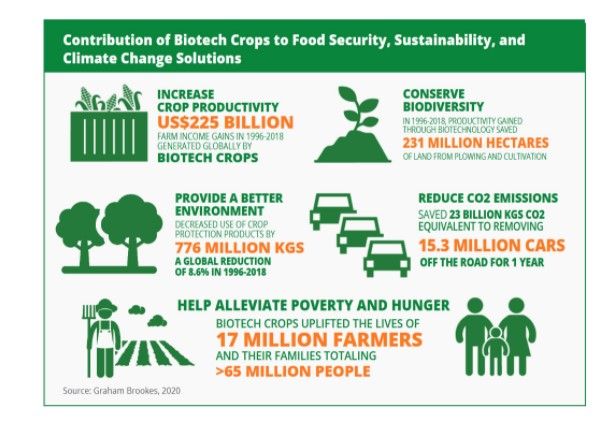Increasing Food Security
Delivering on the UN’s SDG ambition of zero hunger requires working together in a global effort to improve food system resilience through the adoption of agricultural innovations and new technologies.
Delivering on the UN’s SDG ambition of zero hunger requires working together in a global effort to improve food system resilience through the adoption of agricultural innovations and new technologies.
Our members and the global CropLife network are committed to increasing productivity and efficiency to improve food security. Agricultural innovation will be a key factor in finding new solutions. But for innovation to play its crucial role, governments must create a legislative, regulatory, and in particular an international trade environment that enables new innovations to be brought to market quickly and efficiently.
Controlling pests and diseases is critical for global food security. It is particularly crucial in low- and middle-income countries, and in tropical climates, where the impact of crop losses on food security and farmer livelihoods can be particularly severe.
FAO estimates that annually between 20 to 40 percent of global crop production are lost to pests, creating a devastating impact on global food security. We believe the use of crop protection is vital for increasing productivity, preventing food loss, and ensuring the distribution and delivery of nutritious and healthy food. This allows for the production of sufficient quality food and thereby reducing the need for expanding cropped land.
Innovation also holds the keys to a successful transition to more sustainable agriculture practices. We need to find new accessible solutions for farmers to combat crop pests and diseases that means they no longer need to use the older, less sustainable tools – or at least use far less of them and in a more sustainable way.
Learn more about the myriad benefits of pesticides at PesticideFacts.org.

Plant biotechnology, or genetic engineering, utilizes a suite of modern tools and techniques to make plant breeding more precise and efficient so we can breed crops that are more nutritious, resistant to pests and disease, more productive and more beneficial to the environment, helping farmers and reducing impacts on the environment.
According to 2022 official figures compiled by the firm AgbioInvestor, crops developed using genetic engineering (or GMOs) were grown on 202 million hectares in 29 countries, representing 3% growth in area over 2021. The reason for such impressive adoption rates is simple — these crops deliver significant and tangible benefits, all the way from the farm to the fork. Learn more about these benefits in this video.
For more information, visit GMO Answers, an initiative committed to responding to your questions about how food is grown.
In addition to plant biotechnology, plant scientists have continued to develop and utilize new plant breeding innovations, most recently genome (or gene) editing technology, to deliver products beneficial to society and to farmers.
Genome editing builds on years of scientific research and understanding of plant genetics, allowing breeders to work more precisely and efficiently within a plant’s own gene pool to develop new plant varieties.
Genome editing is different from genetic modification because it does not result in the introduction of DNA from other species; rather it allows for the creation of new varieties similar to those that could have been produced by older breeding methods, but in a timelier fashion.
With reasonable and proportionate policies, the contribution that gene editing can make will only increase, creating a better future for the environment and global food security.